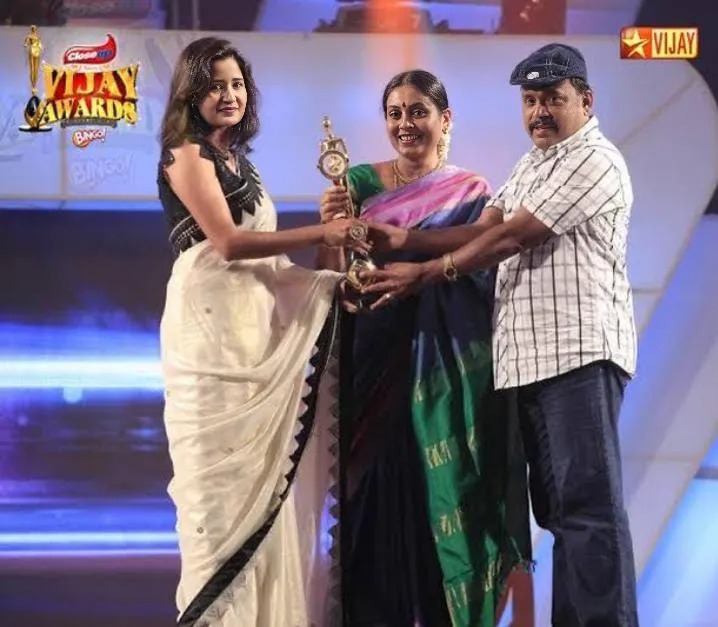Romita Devi VFX Artist
Romita Devi: The Invisible Hand That’s Transforming Indian Cinema Frame by Frame




In a dark editing suite, surrounded by flickering screens, layers of digital compositions, and the soft hum of rendering machines, Romita Devi is at work—sculpting cinema. There’s no spotlight on her, no red carpet moments or paparazzi flashes. Yet, the magic she creates has been seen by millions.
From the haunting visual poetry of Karnan to the explosive spectacle of Leo, the vibrant period setting of Saunkan Saunkne, and the stirring rural realism of Medal, Romita’s artistry as a visual effects (VFX) artist has redefined the viewing experience in Indian cinema. With Dulla the Robinhood (2025) and Fufad Ji rounding out her growing portfolio, Romita stands as one of the most dynamic and versatile VFX artists working in Indian film today.
But her rise to prominence is not just about effects—it’s about vision, resilience, and the unsung power of visual storytelling.
The Making of a Storyteller
Romita didn’t dream of VFX at first. As a teenager in a small town, she was captivated by cinema’s emotions, its colors, its depth. She’d pause during films—not to admire the actors—but to wonder, How did they shoot that scene? How did the car explode? Is that mountain real?
Her curiosity turned into commitment when she enrolled in a multimedia and animation program, diving deep into tools like Nuke, Houdini, and Blender. She didn’t just learn how to “do” VFX—she learned why. “Visual effects are not just about spectacle,” she says. “They’re about helping the audience feel the story more deeply.”
That philosophy has guided her ever since.
Leo (2023): Power, Precision, and Pulse
Romita’s work on Leo—a 2023 Tamil blockbuster starring Vijay—was a turning point. The film’s scale was massive, its tone gritty and intense. Audiences raved about the slick action sequences, the stylized explosions, and the surreal cityscapes. What they didn’t see were the months of compositing, CGI layering, and simulation work that Romita and her team poured into the frame.
Working under pressure, she was responsible for scenes involving particle effects, digital weather, and match-move integration. Every dust cloud, every broken glass, every panoramic skyline—Romita’s touch was there.
“Leo was about control and chaos,” she reflects. “My job was to make the chaos believable and the control invisible.”
Medal (2023): Realism Without Distraction
Where Leo demanded grandeur, Medal asked for quiet elegance. A Punjabi sports drama, Medal tells a deeply human story about a young athlete rising from humble beginnings. VFX wasn’t meant to dazzle—it was meant to disappear.
Romita worked on stadium crowd extensions, subtle lighting adjustments, and rural environment compositing. She helped transform day shots into evening moods, cleaned frames of distractions, and enhanced scenes so gently that viewers never suspected the hand of digital effects.
“To do VFX that no one notices is the highest compliment,” she smiles. “It means I’ve done my job right.”
Saunkan Saunkne (2022): Bringing the Past to Life
For Saunkan Saunkne, a period romantic comedy set in the 1960s, Romita’s challenge was to create an environment that didn’t exist anymore. Modern buildings had to be erased, old-style signboards digitally recreated, and color palettes tweaked for a vintage feel.
Romita led the team that constructed digital matte paintings, enhanced village backdrops, and cleaned up frames to maintain historical accuracy.
“It was like time-traveling with a mouse and keyboard,” she laughs.
The film went on to become a commercial hit and was praised for its immersive storytelling—something Romita’s visual accuracy had a direct hand in shaping.
Dulla the Robinhood (2025): History, Heroism, and Heavy VFX
In Dulla the Robinhood, a film set in pre-independence Punjab, Romita took on a mammoth task: designing epic battle scenes, crowd simulations, fire effects, and digital set extensions that brought scale to the screen.
This project involved working closely with stunt coordinators and production designers to ensure that practical elements blended flawlessly with digital ones. Whether it was simulating cavalry or expanding a battlefield from 100 extras to a digital army of 5,000, Romita’s work pushed the limits of what regional cinema could achieve visually.
“It was a massive film in every way,” she says. “And I had to make it bigger—without making it look fake.”
Karnan (2021): Where Art Meets Activism
Few films have stayed with Romita like Karnan. Directed by Mari Selvaraj and starring Dhanush, the film is a masterclass in cinematic resistance, social justice, and visual metaphor. Romita was brought in to work on several surreal and symbolic sequences—chains breaking, birds in slow motion, ghostlike figures in the background.
This wasn’t technical work—it was spiritual.
“I cried during the pre-vis phase,” Romita admits. “The film was raw and real. My job was not to add visuals, but to respect them.”
Her ability to use VFX as a form of emotional storytelling cemented her reputation as a sensitive, intelligent artist—not just a technician.
The Woman in the Room
Romita is often the only woman in a room full of VFX professionals. “You notice it at first,” she says. “Then you forget—because you’re too busy proving yourself.”
In an industry long dominated by men, Romita is breaking not only visual boundaries but gender barriers. She’s now mentoring young female students, encouraging them to take up careers in post-production, animation, and computer graphics.
“There’s a whole generation of women who love tech and love storytelling,” she says. “They just need to see that it’s possible.”
Beyond the Screen: The Future of VFX
Romita isn’t stopping at cinema. She’s working on a new OTT web series that blends fantasy and folklore with modern-day themes—where she’s in charge of designing entire visual worlds from scratch.
She’s also experimenting with virtual production, where scenes are rendered in real-time on LED walls—allowing actors to perform “inside” digital environments. This fusion of practical and digital filmmaking excites her deeply.
“The future is not just CGI,” Romita says. “It’s storytelling across dimensions—2D, 3D, VR, and beyond.”
Her Philosophy: VFX as Emotion
Ask Romita what her greatest tool is, and she doesn’t say a software name. She says: “Empathy.”
“To understand VFX is to understand what the director feels, what the character sees, and what the audience remembers. The software comes later.”
This emotional-first approach makes Romita’s work stand out. It’s not about more fire, more flash, or more frames. It’s about more meaning.
Conclusion: A Name Behind the Frames
Romita Devi may not take a bow on stage, but she’s everywhere in the cinema—hidden in shadows, embedded in reflections, coded into the breeze. Her work in films like Leo, Medal, Fufad Ji, Saunkan Saunkne, Karnan, and Dulla the Robinhood shows not just technical mastery, but artistic maturity.
In an industry where visual effects often scream for attention, Romita’s greatest strength may be knowing when to whisper.
